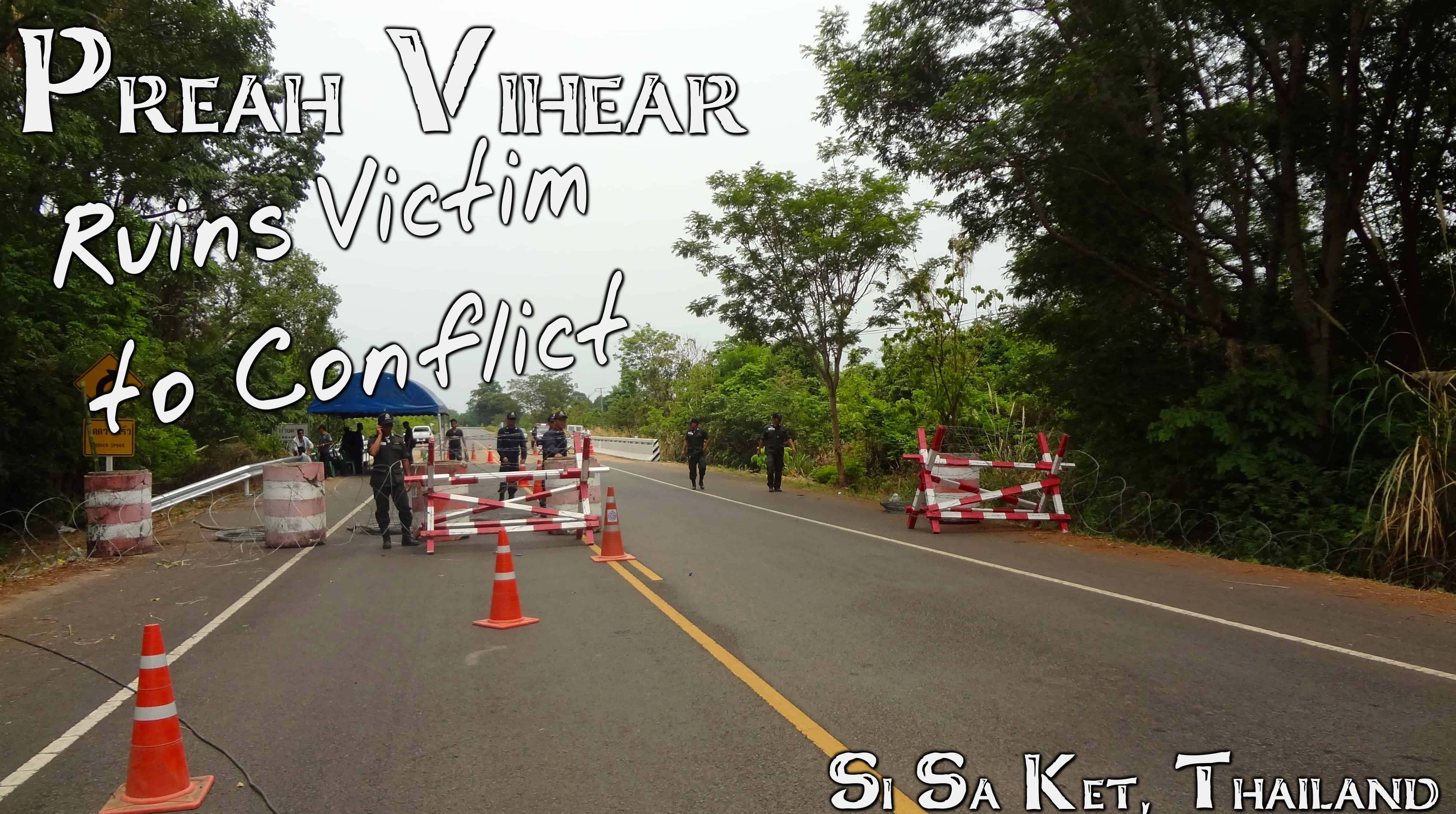
*Due to the tumultuous political nature of this archaeological site, this post might already be outdated.
It’s one of those mornings. Slightly hung-over and it is raining. It shouldn’t be raining. It’s the hot season in the driest part of Thailand. “You picked a good day to go,” a Thai woman says to me in better English than I have come to expect, “very little sun today.”
The only thought the overcast sky brings to my mind is that I hope it doesn’t rain again.
She hands me the keys to a rented motorbike in the lobby of the Tokyo Hotel, amazed at where I told her I was trying to go. “You know about it, right? Not sure if you can go.” I tell her that, yes, I do know about it, but it is so close that I have to try.
At the southeastern corner of Si Saket Province in Isan, on/over the border with Cambodia, is an Angkor civilization site renowned as one of the most spectacular in the region. Prasat Preah Vihear, sometimes transliterated as Phra Vihan, from pictures seen and accounts read, is not that amazing architecturally. But, its setting is atop a 500 meter cliff looking south out over the jungles of Cambodia.
“You can’t get to it. Closed from Thailand’s side. And Cambodia, too, I think,” the bartender at the Wrong Way Café told me last night. This is the result of an ongoing border dispute between the two countries. Despite numerous international court rulings, and the UNESCO decision placing the newly-named World Heritage Site in Cambodia, Thailand maintains that the Preah Vihear site is within their borders.
This contention has resulted in both countries posting military units in the area, and refusing to withdraw them until the other does. As recently as 2011, this has escalated to armed skirmishes with artillery damage to the site along with some soldiers, and occasionally a tourist, shot. While that aspect of the conflict seems to have eased off, this is still a tumultuous situation, which results in fluctuating accessibility at best.
What does this mean for the random travel blogger seeking Lost Cities? I wasn’t sure. I have tried to keep up on the situation as best I can. The Bangkok Post writes the occasional update on Preah Vihear and I have read other blog posts as recently as February, but they got there from Cambodia. The only way to really know was to go there myself.
I opted for a motorbike, not wanting to be at the mercy of buses and tuk-tuk drivers for something as iffy as this. This means a straight drive 110 km from Ubon Ratchathani, the only real town of any significance in the area. Unfortunately, it is a very bland drive. The southern areas of Ubon Ratchathani and Si Saket provinces seem to lack the towns of character I had seen while on a similar trip through southern Buriram to find the Phanom Rung and Muang Tam ruins. Instead I am treated to the sight of countless burned rice fields between the spotty settlements. On the up side, she had been right, there was very little harsh sun and no rain.
As you begin to approach the final stretch to Preah Vihear, it certainly seems as if it is in Thailand. The bottom slot on distance signs marks it as being the last destination on highway 221, never making any reference to the approaching border.
With only about 15 km to go, I can see the mountains where the Preah Vihear ruins lay and think I am clear. Then, with only 10 km to go, comes the roadblock. About a dozen police and military stand at a bridge with orange and white traffic blockers and a blue canopy.
One soldier walks up to me after he has spoken to a couple other cars, letting one through and turning the other away, and asked if I spoke Thai. I told him a little. “Ao bai Prasat Preah Vihear,” I tell him as best I can, “I want to go to Preah Vihear.”
It takes a moment, and a confused look on his part, but he finally and very politely tells me that I can’t go. I have to turn around.
About a hundred meters back, I stop my bike and check my iPhone GPS to see just where I have made it to. As I do many other cars come from inside the blockaded area and a small number are let in. I can’t figure out any pattern to it though.
As I get back on the bike and head in the direction of Ubon, hoping to find a different route back to mix up the scenery, I am passed by another Westerner going toward the blockade. Clutching him is a Thai woman on the back of his bike. I wonder if they will have any better luck?
















I guess I got lucky going from the Cambodian side! They where pretty interesting ruins if you do get the chance, a nice contrast to Angkor Watt.
I read just now this post. As Heidi, I was there in mid 2014. I went by colective taxi from Siem Reap, but not directly. I arranged to stay one night in the village close to Koh Kher (in order to visit these interesting with the strange “Maya pyramid”) and was taken the following day by the same taxi owner to Preah Vihear. I found this temple complex one of the most fascinating of all khmer monuments, due to its location and estructure in 5 or 7 seven ascending blocks of buildings. There are wonderful carvings, specially in the upper levels and a stunning view to the plains from the top. Very reccomendable.
Hi Juan, you’re right that Koh Ker is absolutely amazing. I’m glad you got the chance to visit! Now that it’s been designated a UNESCO site, there are bound to be a lot of changes coming soon.